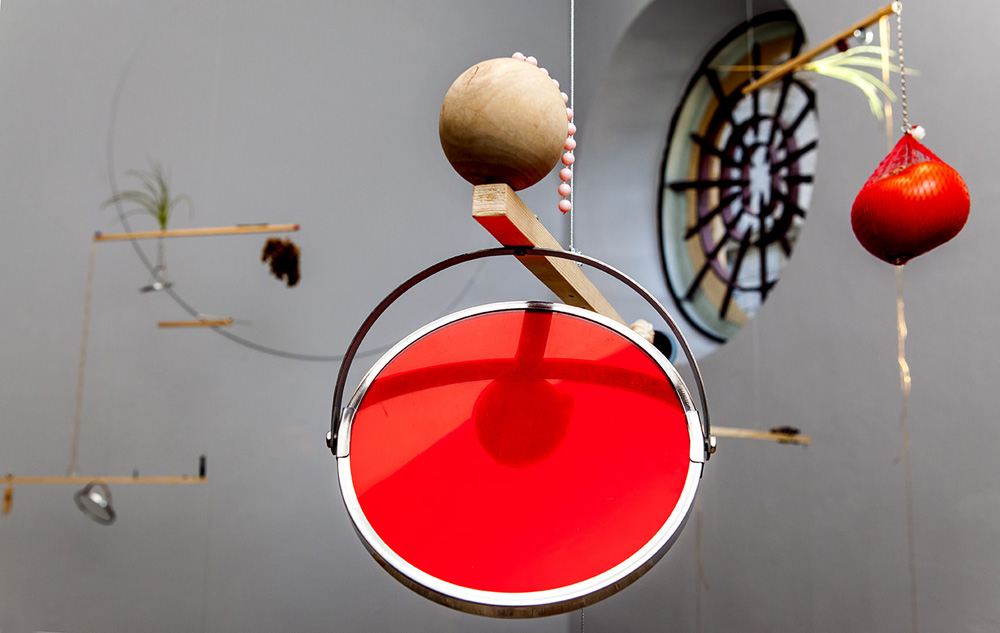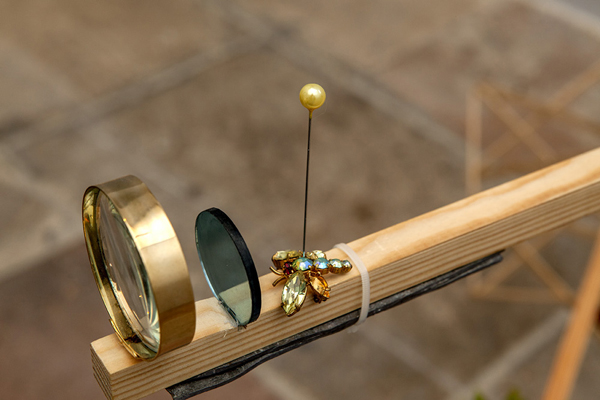Carmen Miranda – An opera of the image
Sound Sculpture 2010
Various dimensions
In collaboration with Marcia Sá Cavalcante Schuback (text)





General view of the installation, Prêmio Energisa, João Pessoa, Brazil, 2012
The work focuses on the image of Carmen Miranda, a Portuguese-Brazilian samba singer, Broadway actress and Hollywood film star from the 1930s up until the 1950s. Her artistic career began in Brazil and then continued in the United States with an international breakthrough. Miranda created her persona by making use of self-exotization and key elements of the Latin American imaginary, investing in a sensuality that oscillated between a parody of herself and a caricature of the “bahiana”, with fancy clothes, trinkets and multicolored turbans inspired by the afro-brazilian clothing.
During many years she was considered the richest woman in America, but with the interpretation of the exotic- ethnic element by American culture, the personality of Carmen and her ambiguous exuberance was quickly distorted and soon reduced into a cliché. Hollywood was not interested in the complexity of her unique personal style, her sense of humor and the use of african-brazilian influences, instead the show-business industry tried to make her into a cheap and noisy version of a tropical excess. Carmen, also called the “Brazilian Bombshell”, collapsed onstage in the United States and died of a heart attack at 46 years of age.
This work, a collaboration with Marcia Sá Cavalcante Schuback, resulted in a sound sculpture that mainly discusses the problems of representation through the performatic body of Carmen Miranda. A public body that also becomes political, marked by the controversies between Brazil and the United States during the 1940s. The image of Carmen is traced through shifting categories. It may be read as a body that holds and uncovers fantasies and anxieties of the dominant ideology in relation to gender, sexual and ethnic difference, she reveals and conceals conflictive messages of gender, sexual and ethnic anxieties and/or pleasures. Allegorically, she has also nourished “carnavalesque” interpretations of the tropics throughout the four corners of the world ever since. Carmen Miranda and her eclectic style is considered to be a forerunner to the Tropicalismo movement in Brazil.
Photos:
Sérgio Araújo
